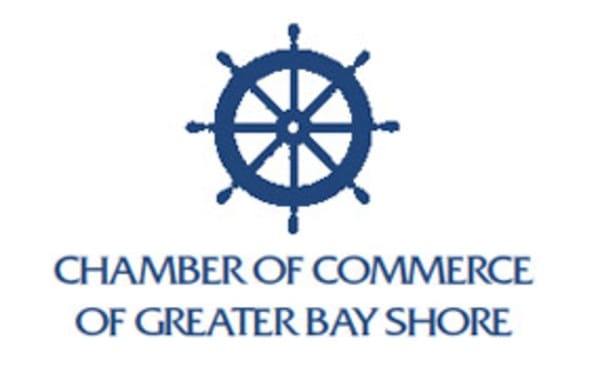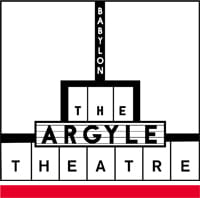Menhaden by the millions — up and down the coast, humpback whales feasting on the bountiful schools along Long Island’s shores and across the New York bight.
A supermoon hung in the Sunday sky, bringing astronomical tides along for the ride. A group of humpbacks chased fish through Moriches inlet before turning back to sea to continue south toward their winter grounds.
But one whale stayed behind, swimming through the east cut, following the bunker deeper into the bay. By Wednesday it was quietly being reported that the Humpback was spotted near the Jessup’s Lane bridge in the Village of Westhampton. I passed the information onto a friend of mine who eagerly skipped out of work early in an attempt to find the massive mammal.
essay & photos by Luke Ormand
After returning from a meeting, I noticed a voicemail from my animal-loving friend. She managed to pack the short message with all of her excitement, exclaiming it was the greatest site she’s ever seen. The whale swam back and forth and lunged out of the water to feed, right before her eyes! I was convinced I needed to make a morning trip, even if it meant waking up well before the sun rose for a chance at seeing something as amazing.
As I daydreamed about what the next day would bring — the back of my mind played a slideshow of images from my two past experiences with humpbacks.
On a birthday trip to the San Juan Islands in the famed Pacific Northwest, my wife and I booked a whale watching trip. It was a misty April morning when we boarded a small tourist boat in search of orcas but quickly came across a well-known humpback whale named “Big Mama”.
This female is a bit of a celebrity in the region — returning every year, often with a calf in tow. We stared out to sea as she gently surfaced, took a deep breath and headed for a deep dive — fluke in the air, ever-graceful.
Watching the whale in the cool waters surrounding the San Juans was a magical experience that I have no intentions of forgetting.
The other experience I have is not nearly as joyful, but equally as memorable. In early April of 2010, a humpback became stranded in the surf zone next to the famed “Main Beach” in East Hampton Village. Feeling the same urge my friend felt last week, I skipped out on work to watch the story unfold myself. Not far from the parking lot of one of the most exclusive beaches in the world, rested a young, 25-foot whale unable to free itself from the pounding surf and shallow sands.
Watching from a nearby jetty with dozens of onlookers, the whale rested helplessly, surrounded by police tape with officials unable to lend a hand. It was a wait-and-see approach, hoping and praying that the next high tide would free the whale.
The whale was visually exhausted. But in a split second, the whale made a desperate attempt to free itself. Fluke flying, head held high, mouth agape. Desperation, followed by stillness. With my camera, I could zoom in on the whale’s head, look into its eye and know that it was suffering.
A day later, NOAA officials shot the whale three times with a .577 caliber rifle.
Arriving on-site last Thursday morning, I was doubtful. There’s no way the whale would still be in this narrow section of bay hemmed in by million dollar homes. Locals had noted that there were a few “holes” in the bay that went down 25 feet or so, allowing ample room for the whale to swim freely and feed, but I remained skeptical. Glassy waters, no wind, a warming sky, where is the whale? Scanning with binoculars, listening carefully for the telltale blow. Silence. Stillness.
Where is the whale?
PFFFFF! Whirling around on the marshy spit searching for the source of the sound, my eyes darted back and forth. A humpback whale! In the bay! In November! Excitement overflowed with no one else around aside for the sleepy sun to witness this event. I ran back to the car, trying to comprehend what I’ve seen and share the news with my always-up-for-adventure wife. Moments later, with the sun now pulling itself above the horizon, we stood watching as the whale made a brief appearance every five minutes or so. A work friend who lives nearby stopped to catch a glimpse and share this special moment with us. As the wind picked up and the clock kept ticking, we packed up and headed to work, vowing to return at the next opportunity.
Friday came but my wife and I couldn’t make the morning trip before work and with the sun setting before the workday ended we wouldn’t be able to try until the weekend. I messaged a marine biologist friend to give him an update on the location. He lamented that it “wasn’t looking good” for this whale, as it had now been in the bay for over five days. I responded back, “We’re going to have to lasso the fluke and drag this thing out,” joking at the time, ever hopeful the whale would find its way out.
Saturday morning my wife and I found ourselves once again whale-watching along the shoreline of the bay. Word had got out and a handful of people were gathered near the Jessup’s Lane bridge to see a once-in-a-lifetime sight.
More friends came by, sharing the magical moments where the whale gave away its position with a wet breath before showing off its telltale humped back and slipping beneath the cold water. Again I wondered, how is this going to end? Will the whale simply leave one day? No goodbye? No “thanks for the fish” wave of its fins or slap of its tail? Or would the situation turn dark?
The bay is known for its shallows and shoals. It’s a treacherous place to navigate a boat that draws a few feet of water, never mind a whale measuring six or more feet from belly to back.
Sunday’s weather was cold and dreary, no plans to see the whale on this day. I looked forward to the short work week with Thanksgiving coming in a few days. Perhaps the whale would still be around and I could share the incredible sight with my young nephews who have never seen a leviathan like this. Before the sun went down again, more than one full week since the whale came to town, bad news was spreading. Beached. Stuck. Hung-up on a sandbar. Helpless.
That night I reached out to the Riverhead Foundation, to which I had been providing reports based on my observations. The Foundation confirmed the whale was stuck off the shore of the Coast Guard station and that it was unable to free itself at high tide. Come morning the Foundation was hoping to accept help from local agencies and private citizens — if NOAA granted “authorization to intervene” she informed me.
Okay I thought, there’s hope, what a story this could be.
Monday had arrived and a co-worker reported that he had observed the whale an hour earlier. Half exposed, the tide in the bay very low, a sad sight. The weather gods were conspiring against our new friend, with strong sustained winds and heavy gusts pushing the water out of the inlet.
If only the whale could put up a sail, it would have no problem riding the strong winds to safety. But stuck it remained in the shadows of the U.S. Coast Guard (the ultimate beacon of hope to any stranded mariner), right beside the deep-water channel. Once again, I reached out to a marine biologist friend who has traveled the world in an effort to protect our planet and the creatures we have put in peril. I sent along photos from earlier in the week and let him know the whale was now stranded. His response was short and succinct, like I have come to expect.
But his typically optimistic tone was startlingly absent:
“Heard about it yes.”
“Let me know when [they] start shooting.”
By Monday afternoon I was able to travel down to see the whale work. I wanted to assess the situation to see how our town could help. Barely above freezing, winds howling from the northwest, a few dozen onlookers watched intently. A private boat approached the whale — with no protective agencies in site — and circled a few times.
It’s unclear if the captain’s attempt was to nudge it free, create a wake or just get a close-up view but the whale made its presence known. Slapping its giant fluke violently against the water in a vain attempt to fend off the boat. Moments later, another vessel approached.
This time it was staff from the Foundation and New York State Department of Environmental Conservation (NYSDEC) officers conducting a health assessment. More fluke slapping ensued, but the whale had failed to get off the bar during the passing high tide and would be left alone overnight.
Tuesday came with no good news. Rumors flew across social media that a group of good Samaritans had travelled to the whale under the cover of darkness and successfully moved the stranded sea creature “a few hundred feet.” There were claims that the whale did what it could to assist, lifting its head and fluke to let them get straps underneath, but ultimately the whale couldn’t make it to deeper waters and the vigilantes gave up.
The Foundation informed me that their assessment the previous day was not good – the whale’s condition was worsening and hope was slipping away. The National Oceanic and Atmospheric Administration (NOAA), the federal agency tasked with protecting these whales, was sending veterinarians from North Carolina and Massachusetts to further “assess” the situation. What were the odds their findings would be any different than the Foundations?
With public anger mounting, news crews on-site and private citizens rallying their own resources, something had to give. A private barge and dredge equipment was brought on-site, with the owners and operators footing the costs. The town had let the Foundation know they would provide boats and equipment. The DEC commissioner and Governor Cuomo issued a press-release stating: “New York State is providing full authorization and cooperation to the National Oceanic and Atmospheric Administration to help save the humpback whale in Moriches Bay. I have directed the Department of Environmental Conservation to make available all state equipment and resources, and coordinate with NOAA on a plan to ensure the well-being of the stranded whale.”
But as the sun set, NOAA officials were continuing to stonewall any attempts to do something.
Wednesday morning and the weather had only improved slightly. Days of northwest winds kept the tides low and had piled sand up against the whale, worsening the situation.
The barge and heavy equipment — despite approval to dredge from the state — remained idle a few hundred yards away. NOAA declined offers from the local fire department and the Coast Guard to use fire hoses on the whale — resulting in gulls literally eating the whale alive.
As morning slipped into afternoon, NOAA’s vets had arrived on-site and determined a course of action. Euthanasia. Whale well wishers cried as the professionals approached the whale. Drone footage captured the heartbreaking reality, showing the whale just feet from deeper water now turned crimson from the vets incisions.
The saga was now over; it was time for everyone to go home.
Thursday brought Thanksgiving, a day to be thankful for all we have and all we can give to others. A day spent reflecting on family, friends, life experiences. A day to appreciate everyone who has been there in a time of need. We all feasted in our warm homes, plates piled high with our favorite foods.
And yet, out in the bay, a few thousand feet from shore, a 25-foot whale lay dead – exposed to the elements, abandoned by all those who were there to help.
Anger, sadness, frustration, resignation. What went wrong? How can we make sure this never happens again? Six years prior, another young humpback found itself in trouble along the shores of the island we call home. It was killed after three days, the public outraged. But nothing changed. This time it took four days to determine that euthanasia was the best course of action. Petitions are being drawn up, letters written, phone calls made, but will anything change?
If we go back in time — 35 years to be exact — we learn about an incredible story of a stranded whale. “Physty,” as it was dubbed by caregivers, was a sick sperm whale that beached itself on Coney Island and was later found in the shallows near Oak Beach.
A plan was hatched to tow the 10-ton animal a mile and a half to a deep-water boat basin at the edge of the Great South Bay where it could be nursed back to health.
At the time, biologist Sam Sadove was the founder and director of the Okeanos Foundation (the precursor to today’s Riverhead Foundation) and diagnosed the endangered whale with pneumonia.
Over several days, the whale was hand fed antibiotic laced squid, with the divers undeterred by the dangers of such a task. Anything to help Physty. After nine-days of hard work, the whale was deemed healthy enough to be set free. A flotilla of boats, including some from the Coast Guard, ushered the whale out of the inlet while thousands watched from shore. Two years later, the whale was spotted during an aerial survey — swimming happily with a pod of other whales. Success.
So how did we get here? Thirty-five years is a long time and yet when another whale needed help (albeit a larger one in a more precarious position), we failed.
Could it have been towed to the nearby Coast Guard station for a checkup? Perhaps. Could it have been ushered out to sea with a friendly flotilla of boats before it stranded? Maybe. We will never know. Only speculation and heartache remain. But we can force change so that when a whale ends up in Bellport Bay after chasing fish through New Old Inlet, we will be prepared.
We can write our congressmen, we can petition NOAA and encourage the state to take a firmer stance. We can send our money to the Riverhead Foundation to provide them with better resources or volunteer ourselves.
A new system must be put in place because the current one broke somewhere in the last three decades. While NOAA may never relinquish their authority, they must be willing to delegate decisions to professionals who are on-site from day one.
There must be better communication from all levels of government.
Informing the public that the situation is being “assessed” and “monitored” not only isn’t helpful, but in this case can be outright deadly. When this happens again, and we can be sure that it will, we must act swiftly and compassionately.
Not every whale can be saved, but it’s our obligation to try.






































